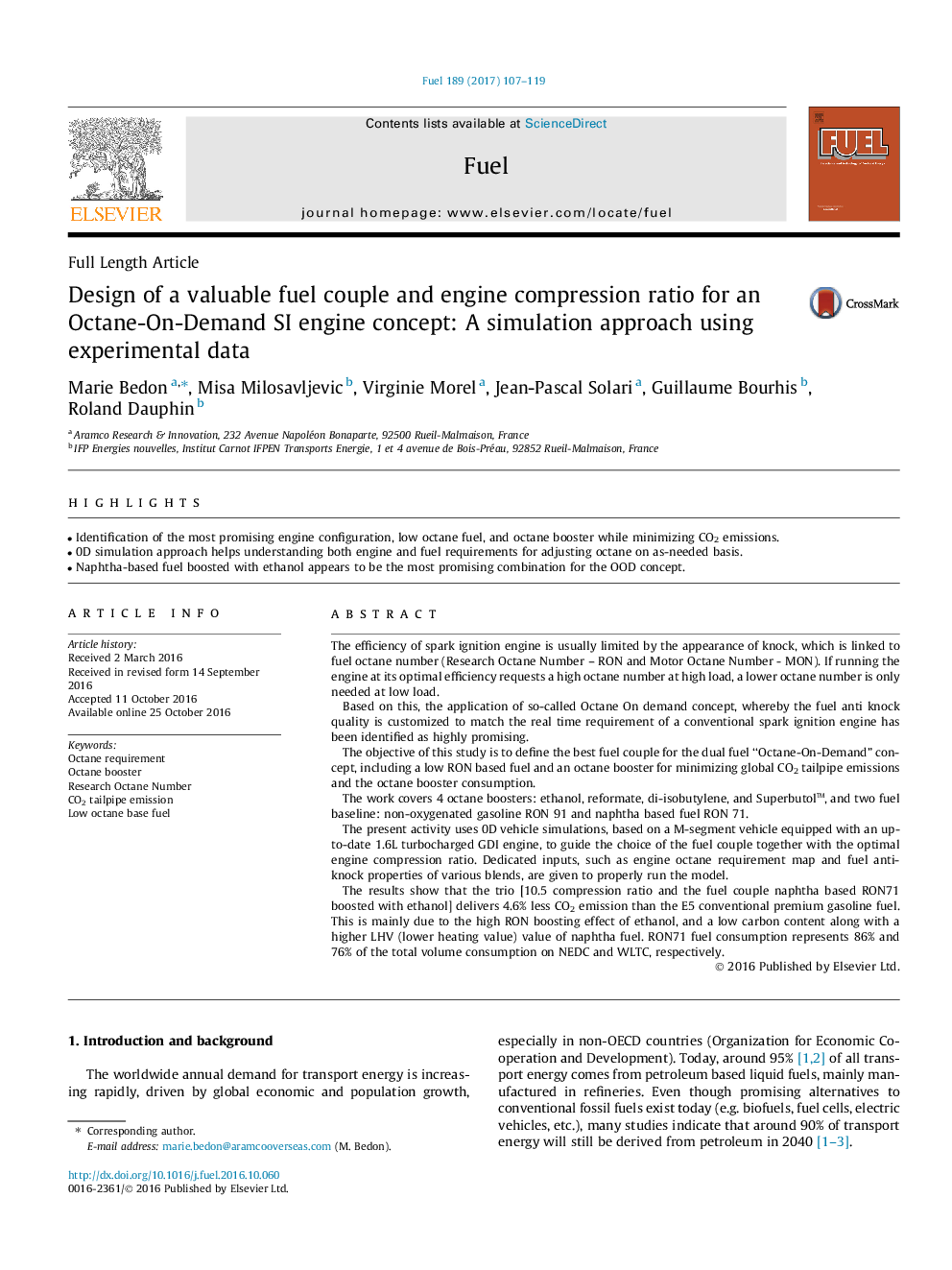| کد مقاله | کد نشریه | سال انتشار | مقاله انگلیسی | نسخه تمام متن |
|---|---|---|---|---|
| 6475663 | 1424975 | 2017 | 13 صفحه PDF | دانلود رایگان |
- Identification of the most promising engine configuration, low octane fuel, and octane booster while minimizing CO2 emissions.
- 0D simulation approach helps understanding both engine and fuel requirements for adjusting octane on as-needed basis.
- Naphtha-based fuel boosted with ethanol appears to be the most promising combination for the OOD concept.
The efficiency of spark ignition engine is usually limited by the appearance of knock, which is linked to fuel octane number (Research Octane Number - RON and Motor Octane Number - MON). If running the engine at its optimal efficiency requests a high octane number at high load, a lower octane number is only needed at low load.Based on this, the application of so-called Octane On demand concept, whereby the fuel anti knock quality is customized to match the real time requirement of a conventional spark ignition engine has been identified as highly promising.The objective of this study is to define the best fuel couple for the dual fuel “Octane-On-Demand” concept, including a low RON based fuel and an octane booster for minimizing global CO2 tailpipe emissions and the octane booster consumption.The work covers 4 octane boosters: ethanol, reformate, di-isobutylene, and Superbutolâ¢, and two fuel baseline: non-oxygenated gasoline RON 91 and naphtha based fuel RON 71.The present activity uses 0D vehicle simulations, based on a M-segment vehicle equipped with an up-to-date 1.6L turbocharged GDI engine, to guide the choice of the fuel couple together with the optimal engine compression ratio. Dedicated inputs, such as engine octane requirement map and fuel anti-knock properties of various blends, are given to properly run the model.The results show that the trio [10.5 compression ratio and the fuel couple naphtha based RON71 boosted with ethanol] delivers 4.6% less CO2 emission than the E5 conventional premium gasoline fuel. This is mainly due to the high RON boosting effect of ethanol, and a low carbon content along with a higher LHV (lower heating value) value of naphtha fuel. RON71 fuel consumption represents 86% and 76% of the total volume consumption on NEDC and WLTC, respectively.
Journal: Fuel - Volume 189, 1 February 2017, Pages 107-119
